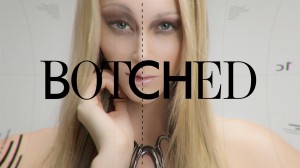As any doctor should tell you, plastic surgery is a very personal decision. Patients can read so much online, watch as much television as they like, studying celebrities who may or may not have had plastic surgery done, but at the end of the day, it is the patient herself (or himself!) who has to be able to live with—and love!—the results. Plastic surgery is not a cookie cutter operation. What works for a friend or family member is likely not the same down to the details for yourself or another patient. Choosing an experienced surgeon and going into a procedure with realistic expectations about plastic surgery ultimately pave the best path to surgical success, body image satisfaction, and overall contentment.
In the hit E! Entertainment Television show Botched, two plastic surgeons, Dr. Terry Dubrow and Dr. Paul Nassif, work to fix previous plastic surgery results that reality TV patients did not like. Botched plastic surgery procedures range from boob jobs and the “uniboob” to butt implants that flip around, nose jobs repaired with part of a patient’s own rib or broken by the surgeon before being fixed, and much more. Patients on the show sought better results for their breasts, noses, and in some cases, even their privates. It’s important to remember that these extreme cases are somewhat glamorized for television and are often more of an outlier than anything else. Countless plastic surgeries per year go exactly as intended with superb results. Still, the Botched program brings up some very important themes to keep in mind, especially if you are considering plastic surgery yourself.
First, it’s critical to have realistic expectations about plastic surgery, but to also ensure you are on the same page as your doctor. Ethically, all plastic surgeons should inform their patients if they are asking for a procedure that just won’t work with their body for one reason or another. Perhaps the desired breast implant sizes are too big to be physically supported by a small frame. On Botched, a transgender patient, Kimber James, had previous 800cc implants barely supported by the skin and tissue of a male chest. Choosing the right size of implants in a breast augmentation procedure is a big part of setting good expectations from the start. As another example, having too many surgeries at once could pose possible health risks or other complications. A skilled plastic surgeon is experienced enough to advise patients on what’s best for their bodies and their overall health as well as helping to ensure the best possible outcome with their desired procedure.
 Second, doing your research and choosing an experienced and honest surgeon is of the utmost importance. Make sure the office is accredited and the doctor is board certified. Choosing a surgeon based on price alone can leave you with a lesser caliber doctor, yet the highest prices don’t always translate to the most experience either. Remember the old adage, if it sounds too good to be true… it probably is. In Botched, one of the patients had a tummy tuck done in Tijuana with a horrible experience overall. This particular episode reminds patients to ask a lot of questions with their prospective doctor before scheduling surgeries.
Second, doing your research and choosing an experienced and honest surgeon is of the utmost importance. Make sure the office is accredited and the doctor is board certified. Choosing a surgeon based on price alone can leave you with a lesser caliber doctor, yet the highest prices don’t always translate to the most experience either. Remember the old adage, if it sounds too good to be true… it probably is. In Botched, one of the patients had a tummy tuck done in Tijuana with a horrible experience overall. This particular episode reminds patients to ask a lot of questions with their prospective doctor before scheduling surgeries.
Third, make sure you are going ahead with surgery for the right reasons. In almost all cases, it is vital that your own happiness and satisfaction are the driving forces for your plastic surgery procedure. Your motive for having plastic surgery should be to make yourself happier and more confident, not necessarily to satisfy a significant other or to attract a new one.
Managing your expectations about plastic surgery is important regardless of which procedure you wish to have done. From time to time we see people in pop culture come up in the news and on shows like Botched as patients trying to look more like a certain celebrity (Justin Bieber or Angelina Jolie, for example) or those who aim to be something else attention-grabbing, like a young woman who resembles a human Barbie Doll. Many times it takes seemingly countless surgeries and an equally endless flow of money to achieve such dramatic and uncanny resemblances to a likeness that already exists. Sometimes this tremendous amount of surgery is not always appropriate, or healthy, for the body in the long run. It rests on the shoulders of the plastic surgeon to gently break this news to patients who may have their hopes set on achieving a certain look and to help guide them to more realistic expectations about what plastic surgery can do for them. It then rests on the patient to be open-minded about what’s best for them and their bodies.
